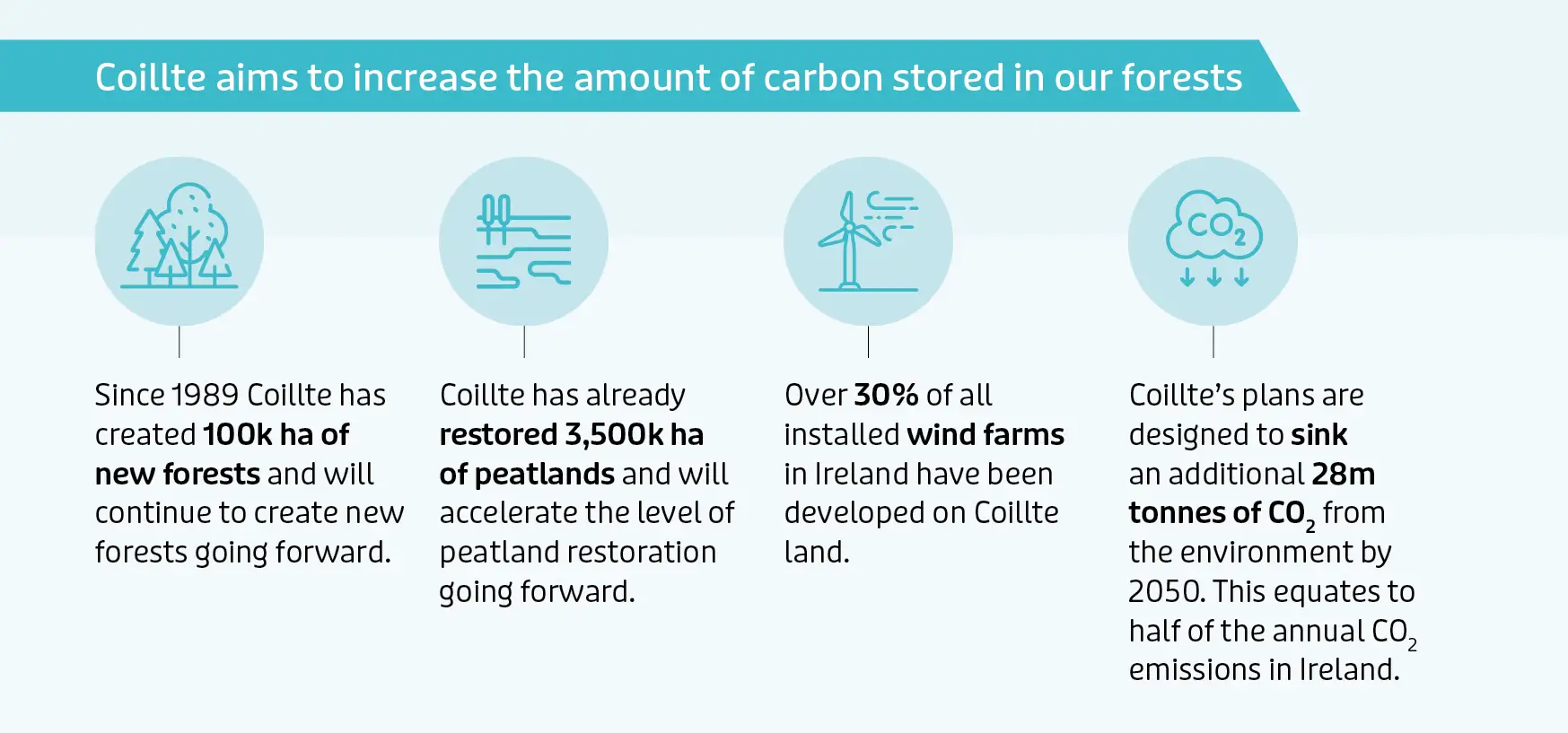Forests for Climate
Coillte is fully committed to supporting the delivery of Ireland’s Climate Action Plan and forests can generate a triple benefit of climate by acting as a carbon sink, store and substitute.
Sink: Forests remove carbon dioxide (CO2) from the atmosphere as trees grow.
Forests act as a carbon sink by absorbing atmospheric carbon dioxide (CO2) through the process of photosynthesis. Conifers grow very well in Ireland, and they are excellent at combating climate change as they sink carbon dioxide at a faster rate than broadleaved trees. However, actively managed broadleaves also play an important role as they provide a very good long-term store of carbon.
Store: Forests store carbon in the woody biomass, forest soils and wood products.
The carbon that is captured and stored in the biomass of trees and plants remains locked in their trunks, branches, roots, and leaves throughout their lifetime. Wood products derived from our forest logs also provide long term storage. Ireland’s forests are a large store of carbon (c. 312m tonnes of carbon), and it is important that this store is protected, managed and increased in the long-term. Through research and carbon modelling, measures have been identified to improve the long-term carbon store in our forest estate. These include active management and expansion of our current forest, and the redesign of some of our peatland forests.
Substitute: Wood products substitute the use of carbon intensive products such as concrete and steel. Forests also provide a sustainable source of timber and other wood products which contribute to the mitigation of carbon emissions from non-renewable materials. Harvested wood products store carbon for the duration of their use, further extending the carbon storage potential.
